Could Stiff Hips Be the Root of Your Knee Pain This Marathon Training Season??
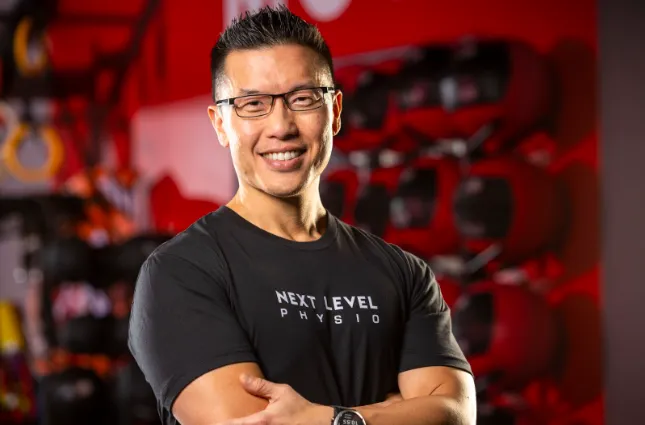
By Dr. Jerry Yoo, Founder Next Level Physio
3 Key Takeaways
1. Knee pain can sideline you from completing your marathon training for the fall.
2. Pelvic and hip mobility play a critical role in knee health and hygiene.
3. Make sure to strength train your hips in rotation and lateral positions to keep your knees on track.
Persistent knee pain can be a frustrating barrier for runners and active adults over 35, who have often tried numerous treatments— from traditional physical therapy to injections to surgery — without lasting relief.
If you find yourself in this situation, whether you’re a runner, golfer, gym goer, or tennis player, it may be time to consider whether the real issue lies not in your knee, but rather in your hips.
With the fall race season coming up fast, making sure you address any knee issues early on is the key to bulletproofing your knees as you increase your mileage.
The Deceptive Nature of Knee Pain
Knee pain is often misleading, presenting as a problem localized to the knee itself. However, the actual source of discomfort frequently originates from elsewhere in the body, particularly the pelvis and hips.
As the way station for most lower body movements, stiff, immobile pelvis and hips can misalign your entire kinetic chain, increasing stress on the knees and potentially leading to chronic pain.
Identifying and Addressing Hip-Related Knee Pain
1. Postural Imbalances and Their Impact on the Hips
Many runners and athletes naturally lean forward while running and performing athletic activities, which is natural during activity. The problem occurs when this forward lean posture carries over into their everyday posture, which often leads to:
1. Tight calves and ankles
2. Lumbar compression
3. Anterior (“forward”) pelvic tilt
4. Reduced hip and pelvic mobility.
This limited mobility shifts undue stress to the knees, which can result in overuse injuries and pain.
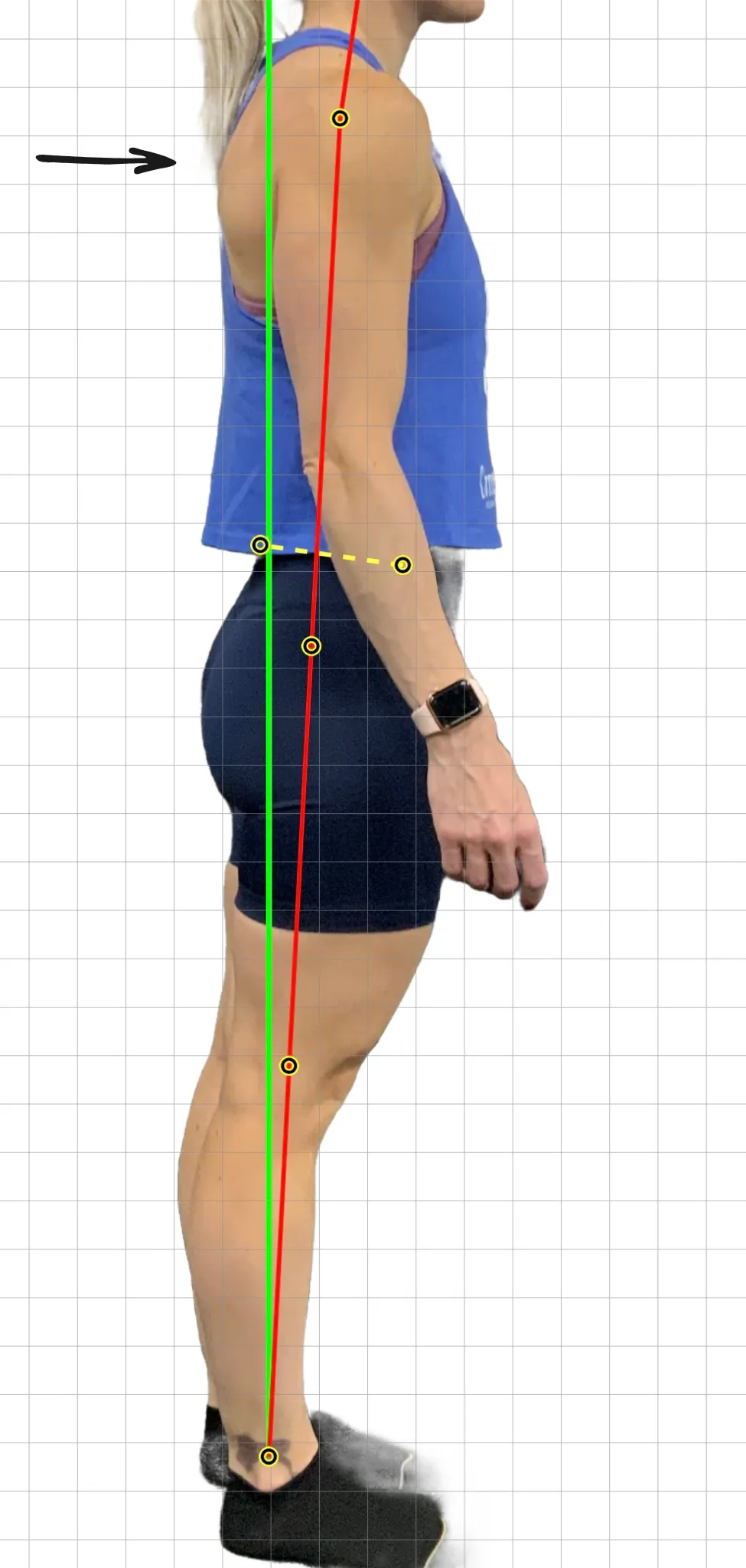
Movement Solutions for Enhancing Hip Mobility:
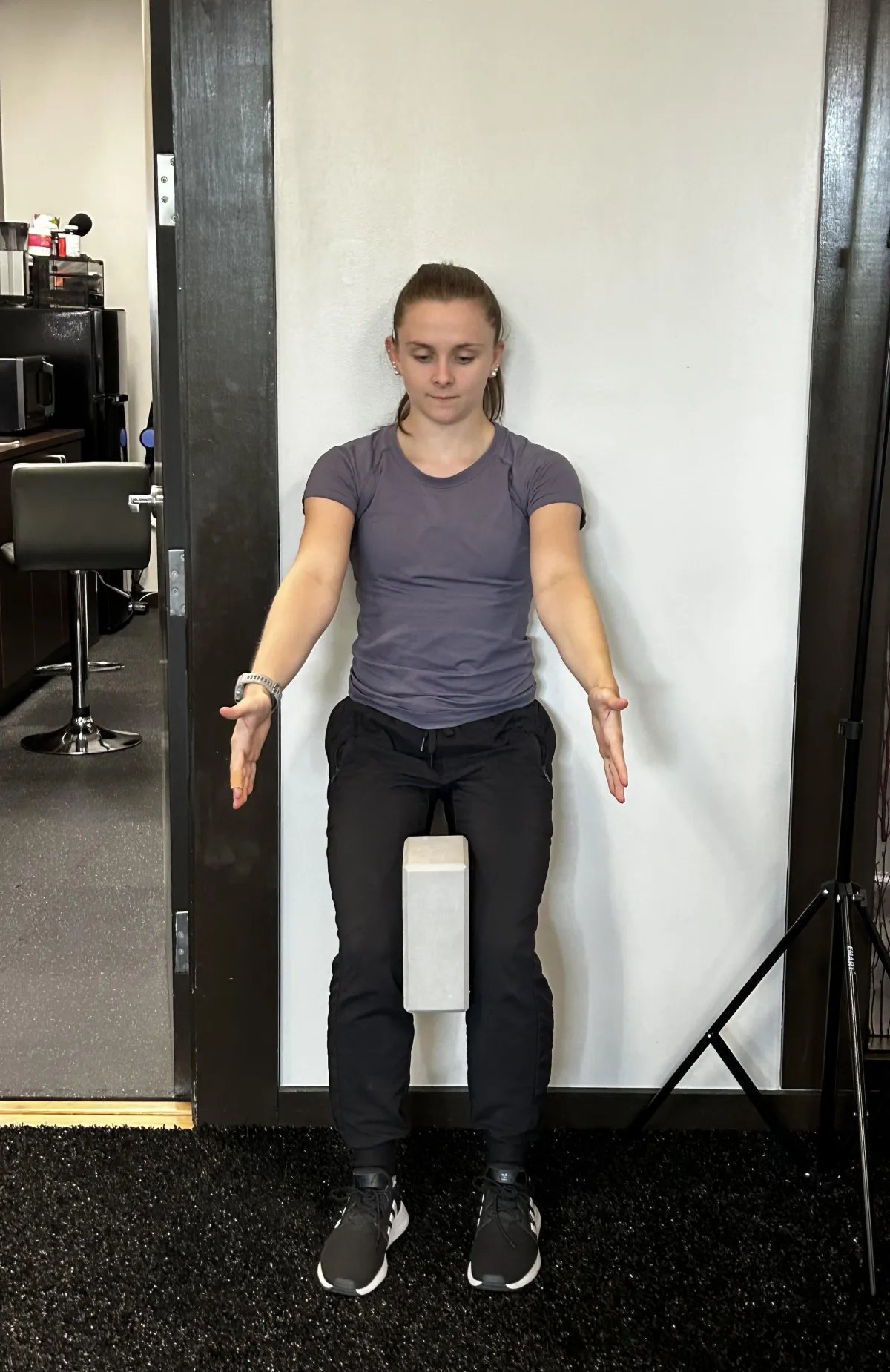
Wall Squat with reach:
- Purpose: To engage the legs effectively, shift your weight towards the heels, stretch the upper back, promote 3D breathing, decompress the lumbar spine
- Setup: Begin by standing a foot's length away from a wall, with a slight tuck of the hips (pubic bone towards the belly button) and weight on the heels.
- Movement: Bend the knees so they align directly over the toes, ensuring they are neither touching nor too far apart. Place palms down at a 45-degree angle just above the thighs.
- Maintain your lower back against the wall while exhaling and reaching your arms forward, allowing the shoulder blades to wrap around the upper body for a stretch.
- Execution Tips: Keep the head facing forward and breathe through the nose; perform this movement for 5 breaths, 3-4 sets throughout the day to optimize benefits.
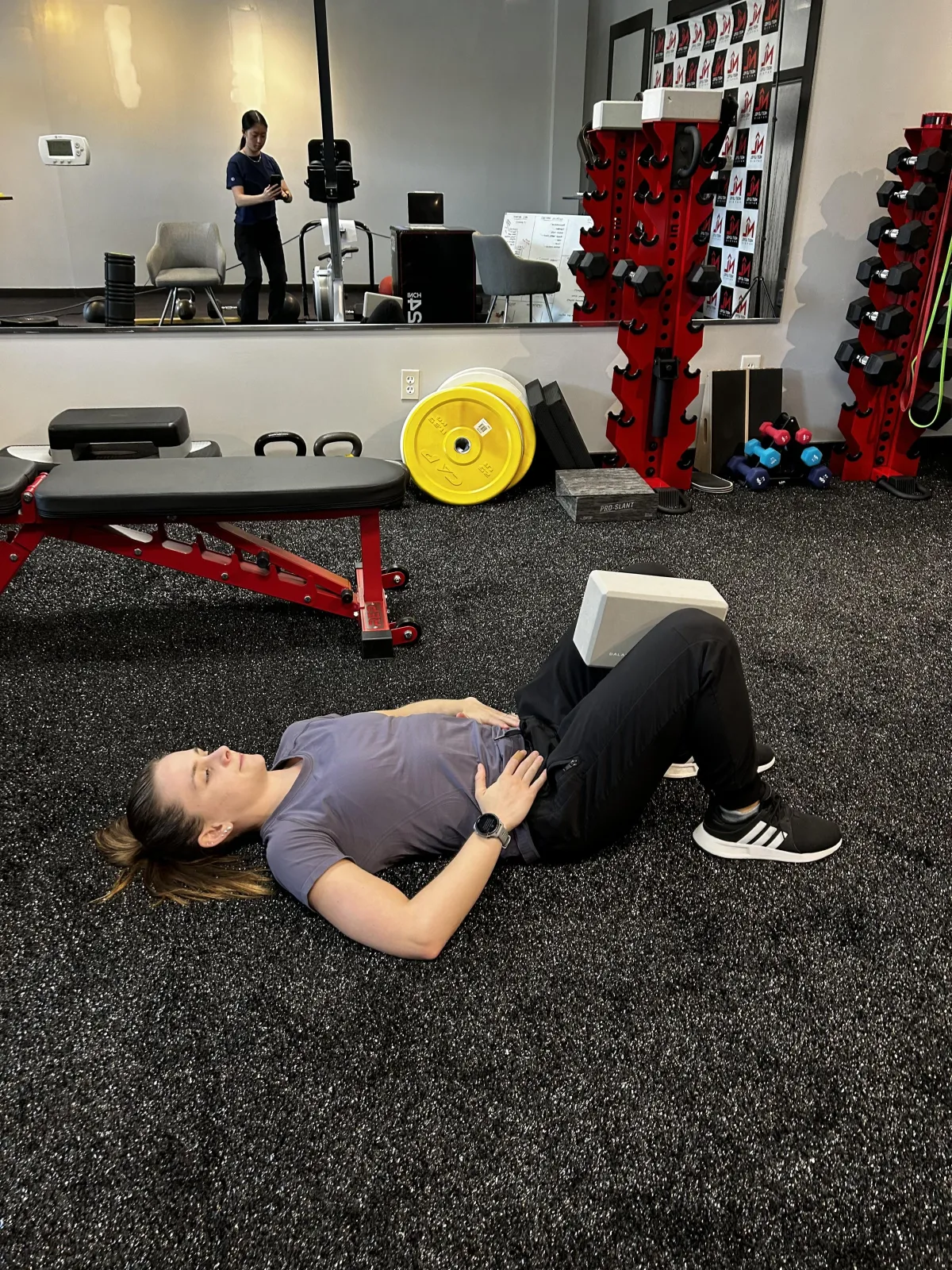
Hooklying Breathing Exercise:
- Purpose and Positioning: The goal of the Hooklying Breathing exercise is to improve pelvic mobility, decrease spinal compression, encourage “3D” breathing, increase hip rotation .
- Setup: Begin by lying on your back and placing a yoga block between your thighs, ensuring a straight alignment from feet to hips.
- Hand Placement: Position one hand on your stomach and the other on your chest to monitor breathing and core engagement.
- Foot Engagement: Press down through the inner heel and big toe, keeping the upper pelvis grounded to avoid lifting into a bridge position.
- Breathing Technique: Perform a controlled, silent inhale through the nose for six to ten seconds, followed by a slow, soft exhale through the mouth, feeling both hands rise and fall with each breath.
- Execution Tips: Keep the head facing forward and breathe through the nose; perform this movement for 5 breaths, 3-4 sets throughout the day to optimize benefits.
- Feedback and Adjustment: Maintain consistent pressure through the feet during the exercise. If the hands do not move with the breath, slow down and focus on the breathing mechanics to enhance effectiveness.
2. Incorporating Multi Directional Exercises
Running and similar activities predominantly involve forward movements, often neglecting the hips' need for lateral and rotational movements, which can exacerbate stiffness and reduce mobility.
Key exercises to improve hip rotation and lateral movements:
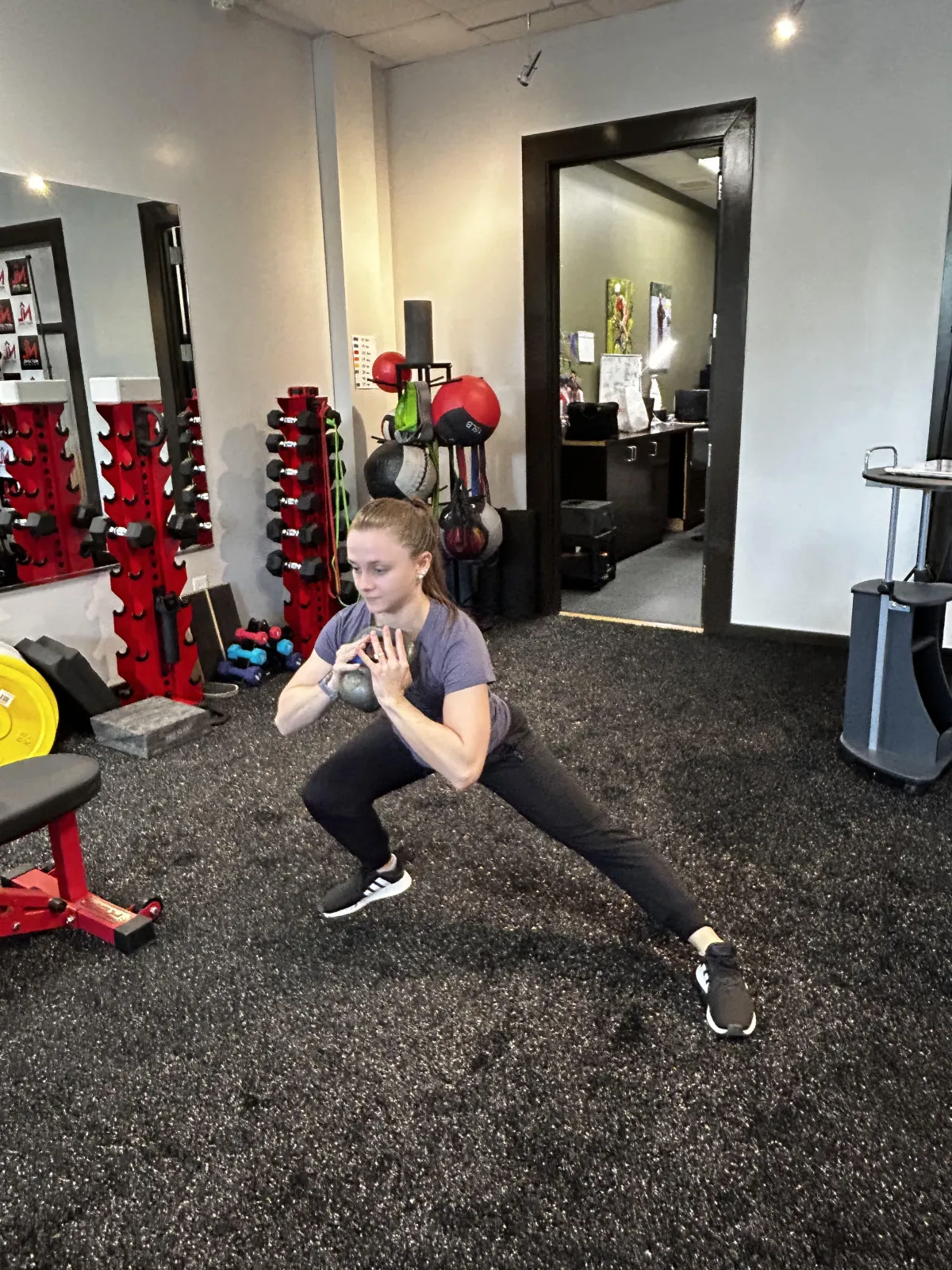
Side Lunges:
- Purpose: improve lateral strength and stability, add movement variation for leg strength.
- Proper Technique: Many individuals experience knee or back pain during side lunges due to improper form, such as forward folding which leads to excessive stress on the lower back rather than targeting the hips and glutes.
- Common Errors: Errors like the knee caving inward or the heel lifting can increase tension and torque on the knee, which is counterproductive for a safe and effective side lunge.
- Starting position: Feet are hip width apart.
- Lower body in the side lunge by pushing the hip back while keeping the trunk upright, using the opposite arm for balance, and focusing on hip and glute engagement rather than knee movement.
- Return to the standing position.
- Alignment Focus: Proper alignment during the movement ensures the hip, knee, and toe are in a straight line, enhancing lower body strength and reducing strain on the knee and lower back.
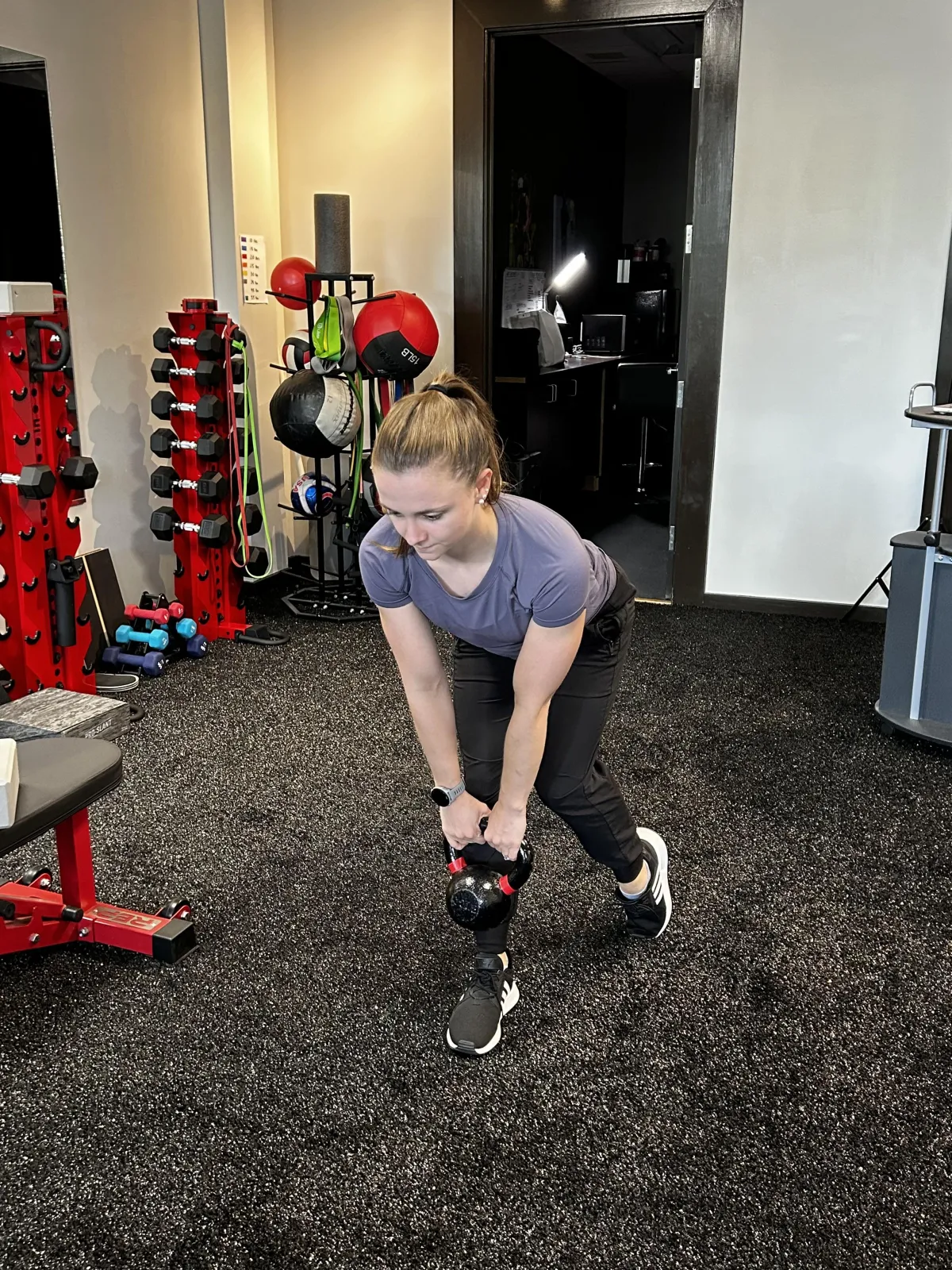
Kickstand Romanian Deadlift:
- Purpose: improve hip internal rotation, single side hamstring strength, core strength
- Starting Position: Stand with your feet hip-width apart. Shift most of your weight onto your front leg, allowing the other foot (the "unloaded" foot) to rest lightly behind you for balance, not taking significant weight.
- Perform the Hinge: Begin the movement by pushing your hips back, hinging at the waist while keeping a slight bend in the knee of your weighted leg. Reach your hands towards the ground as if trying to touch your toes, keeping your back straight and core engaged.
- Maintain Focus on the Front Leg: Ensure that the majority of your weight remains on the front leg throughout the movement. The back leg is there primarily for balance; avoid pushing off with it.
- Check Hip Extension: Be mindful of your natural hip extension limit to avoid overextending. If you feel any strain in your lower back, adjust the position of your back foot closer or modify the depth of your hinge.
- Return to Start: Drive through your front heel to return to the standing position, focusing on contracting the glutes and hamstrings of the working leg. Repeat for the desired number of repetitions before switching legs.
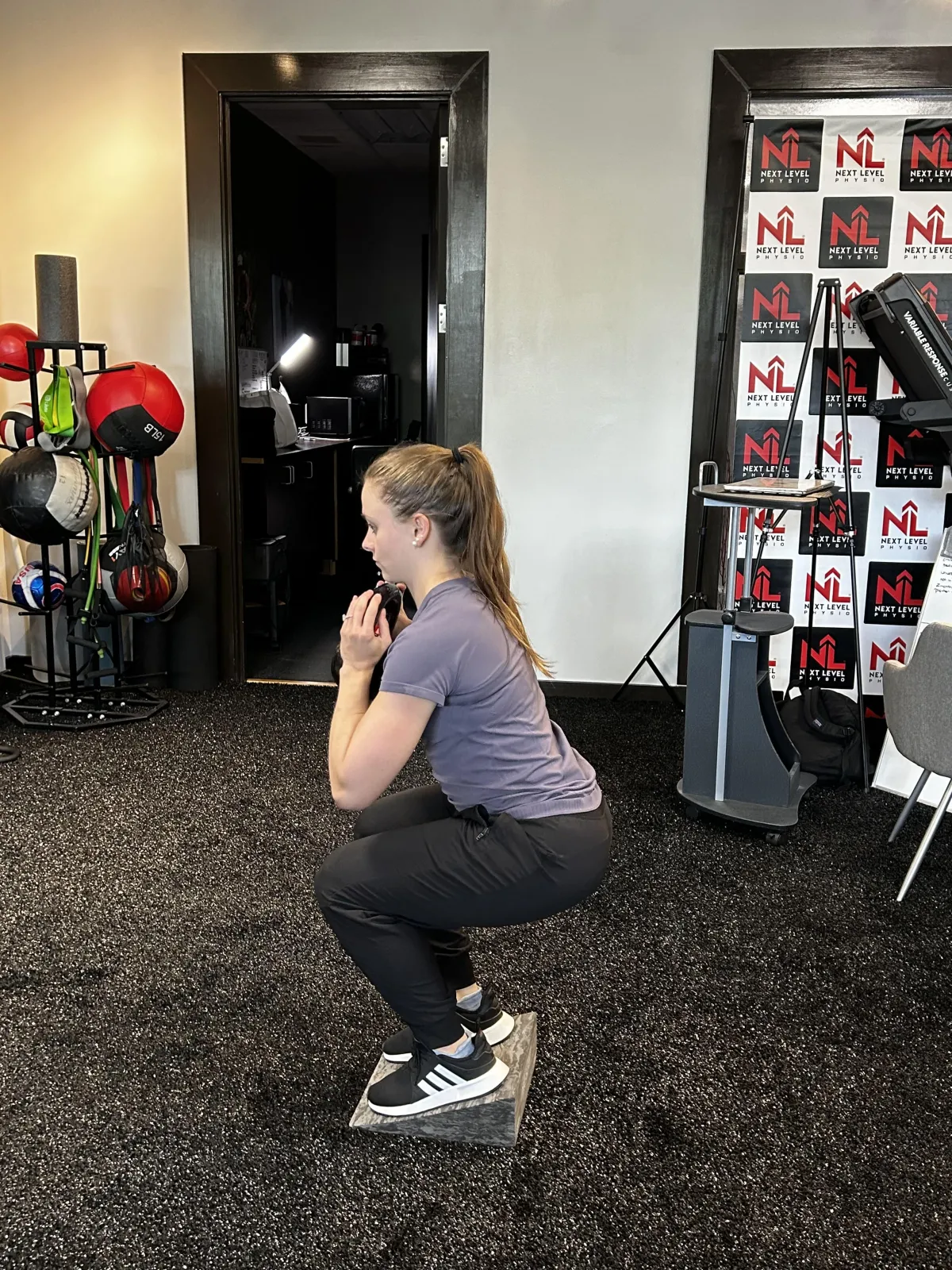
Slant Board Squat:
- Purpose: quad strength, improve hip external rotation, achieve better squat posture and reduce lower back compression
- Beneficial if you have limited ankle mobility, allowing for a more upright posture during squats by facilitating deeper knee and hip movements.
- Starting Position: Stand with your feet hip-width apart. Balance your weight evenly across your feet while on a slant board.
- Perform the squat- lower your body to where your thighs are parallel with the floor, aligning your upper body vertically over your pelvis (“the stack”).
- Return to the starting position.
3. Distinguishing Between Mobility and Flexibility
Flexibility refers to the passive range of motion of muscle and tendon, whereas mobility involves active movement and control within that range of a joint, essential for preventing injury risk, improving running and athletic performance.
Active Mobility Exercises:
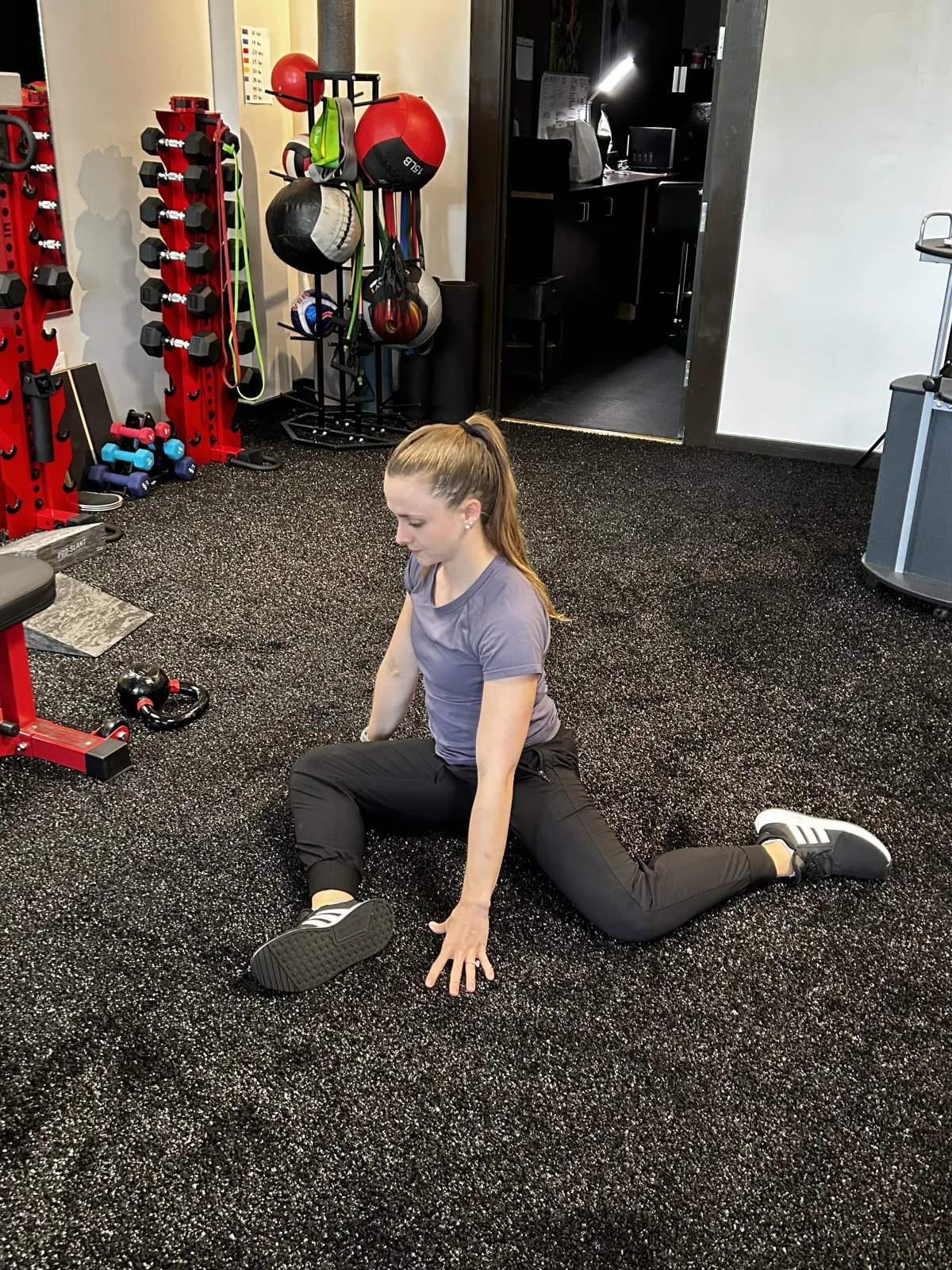
90/90 Hip Stretch with PAILs and RAILs:
- Setup: Begin in a seated 90/90 position with one leg in front and the other behind, both bent at 90 degrees.
Execution:
- PAILs (Progressive Angular Isometric Loading): Gradually begin to push your front knee and rear ankle into the floor, increasing tension while keeping your hips grounded.
- RAILs (Regressive Angular Isometric Loading): Attempt to lift the same knee and ankle away from the floor, increasing hip mobility and strength. - Breathing: Maintain deep, controlled breaths throughout to maximize effectiveness and promote muscle relaxation.
- Duration: Hold each position for about 20-30 seconds, alternating between PAILs and RAILs, and repeat for several cycles.
Why Prioritizing Hip Mobility is Crucial
Improving hip mobility is not just about alleviating current discomfort; it's about building a foundation to future-proof your joints and maintain overall body health. For active adults, integrating hip mobility into your routine supports longevity in athletic pursuits and everyday activities, ensuring a balanced and functional body.
Taking Action Against Knee Pain
At Next Level Physio, we specialize in diagnosing and treating the deeper kinetic issues that conventional methods often overlook. If you're ready to address the root cause of your knee pain, contact us today to book a consultation. Let's work together to keep you moving smoothly and pain-free this fall marathon season.
Wondering what the next step is? Contact us here to schedule your free runners’ road map and assessment at our Cary office. We want to provide you with a success plan for running your best races this fall and beyond!
What our Clients Say:
Marilyn's Journey to Training Pain-Free
Sean's Next Level Experience
Preventing and managing knee pain is about taking a holistic approach to your running routine. By addressing the root causes, choosing the right footwear, maintaining proper alignment, and incorporating targeted exercises, you can keep your knees healthy and enjoy a successful marathon season.
At Next Level Physio, we’re here to support you every step of the way. Whether you’re dealing with knee pain or any other running-related issues, our team of experts is ready to help you achieve your goals and get back to doing what you love. So, lace up those shoes, hit the pavement, and run with confidence!
Dr. Jerry Yoo is the Founder of Next Level Physio.
He has worked with runners and triathletes for over 25 years, and is a clinical running research partner with Rutgers University, Dr. Jerry is an expert at helping athletic men and women over 30 get back to what they love to do.
He can be reached directly at
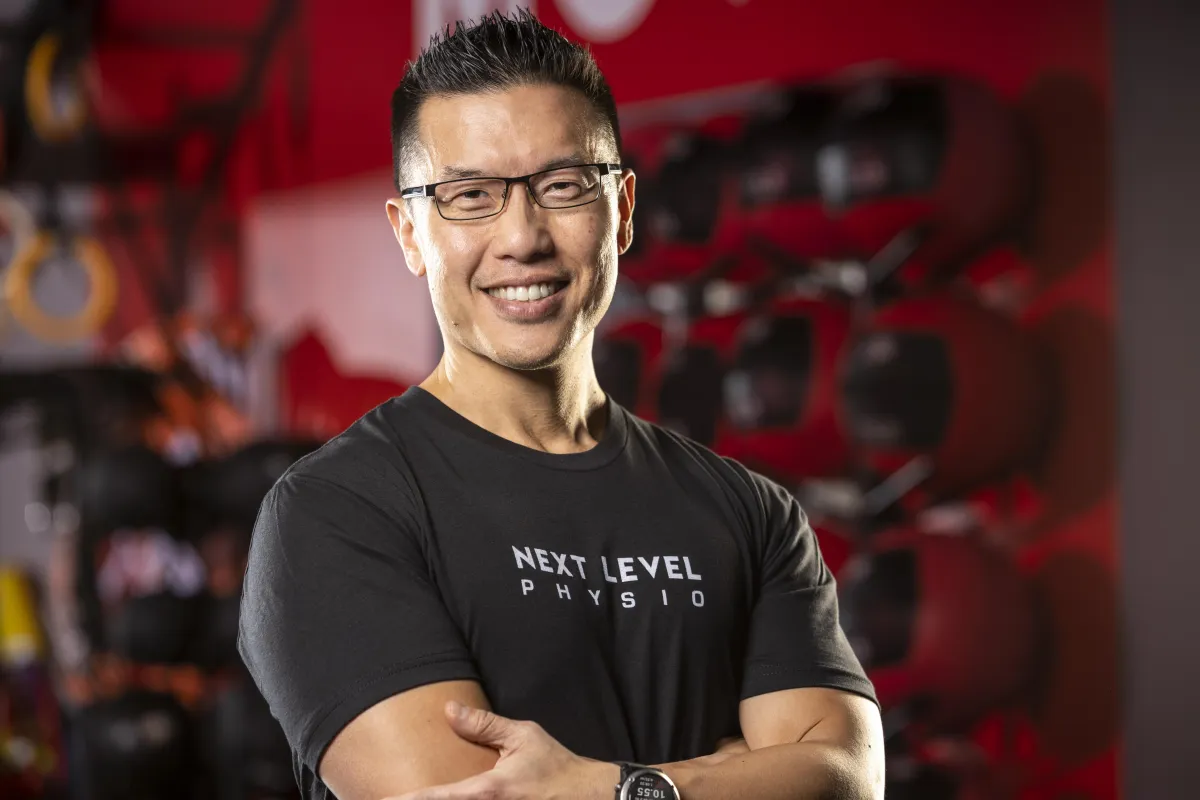
Post Address and Mail
Email: info@nlphysio.com
Address
1055 Darrington Drive
Cary, NC 27513
Get In Touch
Hours
Mon - Fri: 7 am- 6:00 pm
Sat: 8:00 am - 12:00 pm
Sun: By Appointment Only
Phone Number:
919-650-4633
Office: 1055 Darrington Drive
Cary, NC 27513
Call 919-650-4633
Email:info@nlphysio.com
Site: www.nlphysio.com

